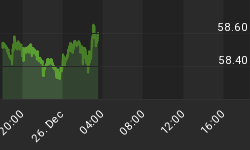The oil industry, it seems, has gone all-in on digital technology, having gotten an early taste of how much various solutions can influence its cost discipline and bottom lines. Last month, Oilprice wrote how some in the digital tech field expected artificial intelligence for the oil and gas industry to pass from theory into reality this year. But there’s another segment of digital technology that is already making a splash, and the ripples from this splash will continue to multiply this year: predictive analytics.
Knowing what to expect from the future in terms of oil fundamentals and prices, but also the environmental impact of their operations, has become vital for oil and gas companies--and data analytics service providers are only too happy to help.
“The oil and gas industry may have emerged from its last downturn, but the pressure on companies to find new capital and operating efficiencies remains unrelenting,” the chief technology officer of Lloyd’s Register told Forbes’ Mark Venables. “As in other industries, demands also grow stronger from regulators and other stakeholders to improve environmental performance and safety. Advanced data technologies such as predictive analytics offer oil and gas companies a means to navigate this increasingly complex landscape.”
Data analytics can also optimize production in the field by predicting supply and demand with a view to adjusting production, but also by predicting equipment maintenance needs that help streamlining operations and reducing costs further, according to Emerj, an AI-focused research company.
At the moment, oil and gas companies utilize two types of predictive analytics solutions: predictive maintenance ones and business intelligence ones, writes Emerj author Ayn de Jesus. The former type has to do with anything from equipment maintenance predictions to energy consumption optimization and solving particular problems such as pump failures. The latter, business intelligence, comprises solutions that help oil and gas companies set, for example, production standards, and checking if these standards can be reached and how. Business intelligence software also provides insight into the future of the industry and emerging trends by analyzing heaps of structured and unstructured data. Related: Japan Regains Bitcoin Crown As Yen Trading Volume Soars
Three years ago, research from Bain and Company suggested that oil and gas producers could boost field and refinery performance by between 6 and 8 percent by utilizing data analytics technology. At the time, however, the researchers warned few companies were taking advantage of all that data that analytics could offer. Now the numbers must be growing as the benefits become evident. The growth of the Internet of Things is fueling this shift as more and more devices get connected to business networks across industries.
It looks like now that predictive analytics is gaining ground in oil and gas, producers and refiners are moving closer to the next big step: prescriptive analytics. Predicting when a piece of equipment will need downtime for maintenance is good. Knowing why it will need maintenance at this precise moment is better.
Prescriptive analytics, as one software industry insider put it in an article for Offshore Technology, “tells the operator the root cause of the problem.” AspenTech’s energy industry marketing director Ron Beck goes on to explain that “It can inform them not only that the compressor is going to fail but also that its impending failure is directly linked to the leakage of liquid into the gas lines at a certain concentration or even just a slow change in the pressure recorded.”
And yet the oil and gas industry has a long way to go to realize all these potential benefits. As Forbes’ Venables notes, although over half of the 100 biggest oil industry players have demonstrated they use predictive analytics in their operations, this leaves 43 percent that have yet to do this.
By Irina Slav for Oilprice.com
More Top Reads From Safehaven.com
















